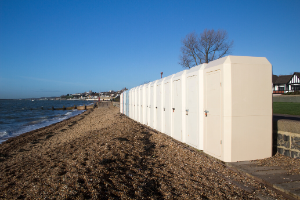Okay, we know what many folks are going to say. The DRO is troublesome and may not work.
While it is true that learning to use it effectively is difficult, it actually works fine. It’s the theory and engineering principals behind it that are difficult to maneuver and  grasp.
grasp.
The move from static route creation and management to that of a very dynamic (always changing) way of route management is now at hand. Thanks to the virus, the premature push to unprecedented levels of eCommerce, and the need for 7 day service, all are being forced to transform quicker than originally planned.
The time to embrace Dynamic Route Optimization is at hand. The fundamental culture change to Dynamic vs. Static planning is now underway.
Those of you who have been around for the last 7 years know that we/ve talked alot about a “Transformation” in the way business is conducted. The change was needed to shift the culture from a primarily business-to-business operational focus, where the number and location of stops didn’t change much, to the new focus where routes, while having some familiar characteristics, really do change dramatically from day to day.
In order to facilitate this, a new way of dynamically engineering and planning routes obviously needed to be introduced.
As we have now all seen, based on the dramatic shift in volume mix, there is a need to think differently about the daily planning and engineering of routes. The time to do this is now.
Here are some reasons why it is important to embrace the future with DRO:
- Constant Work Area Characteristic Changes - The infusion of 30%, 50% 70% and more residential stops into areas that were somewhat “static” completely changes the game. While this is obvious to most, the high variability places tremendous stress on daily route planning. It is not economically possible to set a static route, and then just let it rip everyday and “hope” it is profitable.

- eCommerce Stop & Package Charges - long story short, no doubt about it, your overall revenue per stop is going to decrease. In fact, the thing that really needs to be watched and needs concern is the rate at which it decays. This is something to watch for in your next negotiation. We can and will help you with this. The deterioration and decay of your per stop revenue dictates that more stops must be performed, just to maintain and realize the same amount of total revenue per driver day. Balancing this while taking into account new, changing density levels can be a daunting task. Proper engineering leads to the ability to set up the DRO so that you can maximize and maintain acceptable revenue and net operating results. It's the only way that the business model will work with an ever increasing eCommerce component. Keep in mind that this is the announced objective of FedEx leadership.

- Leadership - Spending the time to properly set up the DRO leads to less loading confusion, and stop flexes prior to dispatch. If there is one thing that drivers despise it's morning load chaos. Starting the day frustrated leads to other issues as you well know. An organized, low stress dispatch leads to less frustration, better service and happier drivers. The time, and maybe money spent on route engineering and scheduling will yield a large positive return on your investment and provide a level of leadership that drivers are looking for.
- Negotiation Considerations - FXG is assuming you are optimizing your dispatch. They've engineered your negotiation and resulting contract as such. Deviation from informed optimal dispatch always results in decreased margins. We've developed a way to compare your daily dispatch and compare it to the informed optimal and use it in your
 negotiation process. Without letting the cat too far out of the bag, it is valuable and is now definitely a needed tool heading into your next negotiation.
negotiation process. Without letting the cat too far out of the bag, it is valuable and is now definitely a needed tool heading into your next negotiation. - Decreased Nightly Hassle - BC's rarely like to work all day, just to have to stay up late, or wake up early in order to "make the cuts" for the next day. It takes a long time and usually results in multiple flexes and load confusion for the A.M. dispatch. A properly setup & engineered DRO system leads to less work at night for a BC. This makes for a happier, more effective BC.
This brings us to the proliferation of the many routing software programs that are now out there. These are needed as a band-aid for improper engineering & DRO  setup. If you use and depend on these to “adjust” routes daily, know that while you are making drivers happy with easy-button stops moves, and re-routing, you are eating away at efficiency. This, in turn, slowly deteriorates your margins.
setup. If you use and depend on these to “adjust” routes daily, know that while you are making drivers happy with easy-button stops moves, and re-routing, you are eating away at efficiency. This, in turn, slowly deteriorates your margins.
This is important because your margins are what is being examined through the Financial Health Assessments that are now making the rounds through the CSP population. Re-routing for convenience may put you in a bad light when looking through the FXG financial prism.
The good news is, as the DRO evolves and gains acceptance, the need for a tool that facilitates wholesale stop moves between routes, then "re-optimizes", will fade. Probably the largest benefit to proper engineering and DRO setup lies in the ability to produce delivery manifests that are in decent order of delivery from the beginning. A properly engineered operation with a correctly set up DRO will lead to more organization without the need for a special, no return on investment software system that takes advantage of the current situation.
In the end, proper engineering and a correctly setup DRO, leads to a much smoother, more profitable operation.
